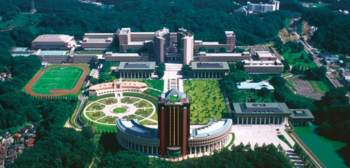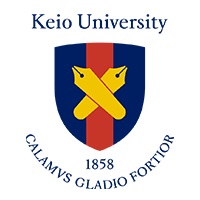- #=215 QS Global World Ranking
- Private not for ProfitStatus
- Very HighResearch Output
- 33,518Total Students
- 4,158Faculty
- 3,309Int'l Students
The University’s position in the current QS World University Rankings.
Whether the University is funded by the government of that country or state, or funded by private donations.
The research intensity of the University, based on the number of papers output relative to the University’s size.
The number of full time equivalent students enrolled at the University.
The number of full time equivalent teaching staff employed by the University.
The number of full time equivalent international students enrolled at the University.
Keio University
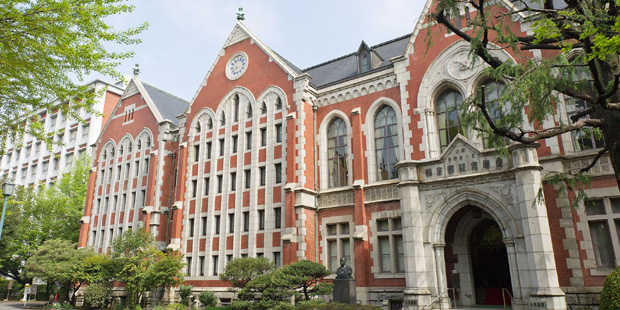









About
Keio University has six campuses (https://www.keio.ac.jp/en/about/campus/) throughout the Greater Tokyo area. Three of them—Mita, Shinanomachi, and Shiba-Kyoritsu—are located in central Tokyo, which is consistently ranked at the top of QS Best Student Cities (https://www.topuniversities.com/best-student-cities). Mita and Shiba-Kyoritsu are just a short walk away from the iconic Tokyo Tower. Hiyoshi, Yagami, and Shonan Fujisawa campuses are located just outside Tokyo in Kanagawa Prefecture, offering a comfortable, cosmopolitan lifestyle in a lush, green environment.
Shinanomachi Campus is home to the School of Medicine and the Keio University Hospital, one of Japan’s leading university hospitals and a provider of advanced medical care. Every year, the university awards the prestigious Keio Medical Science Prize (https://www.ms-fund.keio.ac.jp/en/prize/), which has come to be known as a precursor to winning a Nobel Prize. Past recipients include Nobel laureates such as Dr. Jules A. Hoffmann (2012), Dr. Yoshinori Ohsumi (2015), and Dr. Tasuku Honjo (2016).
Keio University is the oldest private university in Japan, founded in 1858 by Yukichi Fukuzawa (1835-1901), a Japanese author, writer, teacher, translator, entrepreneur, journalist, and leader who helped transform Japan from a feudal nation into a modern nation-state. Fukuzawa, who was from a low-ranking samurai family, began Keio to help modernize the country and catch up with the West, thinking that it was essential to train talented individuals in the private sector in addition to public service.
Thanks in part to its history, Keio University is still known for its strength in industry, with an impressive alumni network that includes many CEOs at listed companies in Japan. But Keio alumni excel beyond the private sector. In addition to academia, Keio has produced more than its fair share of leading figures across arts and culture as well as in government and politics, including three former Prime Ministers.
As of 2020, Keio had a thriving community of over 2,100 international students from more than 80 countries. The university offers more than 115 degree programs and 13,000 courses across its undergraduate faculties and graduate schools. Of these courses, more than 20 programs and 1,000 courses are available in English. Typical English programs and courses include:
● Short-Term Programs (http://www.ic.keio.ac.jp/en/study/short/)
● Degree Programs Offered in English (https://www.keio.ac.jp/en/academics/programs-offered-in-english/)
Japanese Language Program (JLP) (http://www.cjs.keio.ac.jp/)
The JLP is famous among learners of Japanese as a rigorous program that trains highly proficient Japanese speakers through the immersive direct method.
Social Media
● Keio Global (FB)(https://www.facebook.com/keioglobal/)
Keio University Instagram(https://www.instagram.com/keio_university/)
Keio University has six campuses (https://www.keio.ac.jp/en/about/campus/) throughout the Greater Tokyo area. Three of them—Mita, Shinanomachi, and Shiba-Kyoritsu—are located in central Tokyo, which is consistently ranked at the top of QS Best Student Cities (https://www.topuniversities.com/best-student-cities). Mita and Shiba-Kyoritsu are just a short walk away from the iconic Tokyo Tower. Hiyoshi, Yagami, and Shonan Fujisawa campuses are located just outside Tokyo in Kanagawa Prefecture, offering a great urban lifestyle in a lush, green environment.
Shinanomachi Campus is home to the School of Medicine and the Keio University Hospital (http://www.hosp.keio.ac.jp/en/), which is known as one of Japan’s leading university hospitals and a provider of advanced medical care. The New Hospital Building (Building 1) was completed in 2018 and is an important facility that supports Keio Medicine, a unique approach to medicine espoused by the university. Hiyoshi and Yagami are located in Kanagawa Prefecture, just outside Tokyo, a convenient distance from popular areas like Shibuya and Roppongi, which are both accessible in under 30 minutes by train. In 2018, Yagami became a state-of-the-art quantum computing research base with the establishment of the IBM Q Network Hub at Keio University. IBM Q is an advanced, general-purpose quantum computer developed by US technology company IBM, and Keio University is the only facility in Asia enabled to use IBM Q’s cloud computing system. Shonan Fujisawa Campus (SFC) is located further south in a lush natural environment near the ocean with views of Mt. Fuji. Not only is it Keio’s greenest campus, but it’s also one of its most advanced, with cutting-edge technology and equipment that includes an on-campus fab lab (https://fabcampus.sfc.keio.ac.jp/index_e.html).
With over five million volumes and counting, the Keio University Library system is one of the largest in Japan. These libraries, called media centers, are located on each campus, giving students and faculty access to major English and electronic journals as well as a wealth of e-books. Since 2019, Waseda University Library joined Keio to establish Japan’s first jointly operated interlibrary system (https://www.keio.ac.jp/en/press-releases/2019/Sep/3/49-62791/), which allows Keio students access to another five million volumes available from Waseda’s libraries.
As of 2020, Keio has a thriving community of over 2,100 international students from more than 80 countries, and there are plenty of events and traditions to experience at Keio throughout the year (https://www.st.keio.ac.jp/students/life/guide/car.html). The historic rivalry with Waseda University makes for exciting matches across all sports, but the fabled Waseda-Keio Baseball Games—known as the Keiso-sen at Keio—are in a league of their own. These games, a century-old tradition started in 1903, are a hallmark of Japanese college sports and are broadcast live on national television every year.
KOSMIC (https://www.facebook.com/groups/kosmic.keio/) is a student organization affiliated with the International Center (http://www.ic.keio.ac.jp/en/), an organization that provides support for international students across a diverse range of events, guidance, clubs, and Japanese speech contests. As with many Japanese universities, it’s common for Keio students to live in off-campus dormitories and commute to school. At Keio, most student dormitories (https://www.keio.ac.jp/en/student-life/housing.html) are located near Hiyoshi Campus, where many first- and second-year students attend classes. Keio dormitories are known for fostering interaction between international and Japanese students.
While admission eligibility varies by each undergraduate faculty, graduate school, and program, most share a holistic screening process based on the submission of a statement of purpose, research plan, letters of recommendation, standardized test scores, and academic transcripts. Students from non-English-speaking countries may be asked to submit additional documents proving their English ability. Interviews are also often part of the application process, many of which are conducted online for degree programs offered in English so that students can complete the admissions process in their home country before traveling to Japan.
Tuition is the same for all students everywhere, so Keio can be an affordable choice for international students who want to study in Japan. It can be a much more reasonable alternative to many universities in the US and Europe.
Degree Programs Offered in English (https://www.keio.ac.jp/en/academics/programs-offered-in-english/)
Keio also offers the following non-degree programs.
Thesis at Keio (http://www.ic.keio.ac.jp/en/study/short/thesis_at_keio/thesis_at_keio_overview.html)
This program is for graduate students who want to spend a short period researching their thesis at Keio under the guidance of a Keio faculty member.
Japanese Language Program (http://www.cjs.keio.ac.jp/)
The JLP equips students with the advanced Japanese language skills needed to do academic research in Japanese in the future.
Keio Summer Program (https://www.keio.ac.jp/en/academics/short-term/)
A quarter-long, credit-bearing program for undergraduate students, who can learn about Japan alongside Keio students.
Keio has several types of scholarships that students can apply for before enrollment.
Design the Future Award (http://www.ic.keio.ac.jp/en/life/scholarship/dfaward.html)
A full-ride scholarship for graduate students that covers tuition, mandatory fees, room and board, and travel expenses.
GIGA Program (https://giga.sfc.keio.ac.jp/cost/financial-aid/)
Two types of scholarships are available for application before entering this undergraduate program for students who want to learn about social issues that combine ICT and the social sciences.
Scholarships available after enrollment (https://www.keio.ac.jp/en/student-life/scholarships.html)
Keio University is said to be one of the best universities in Japan for employment after graduation. It has one of the highest employability rates in the nation, and every year Keio consistently ranks among the best 50 universities in the world on the QS Graduate Employability Rankings (https://www.topuniversities.com/university-rankings/employability-rankings/2020).
Keio is also home to the Mita-kai, one of Japan’s largest alumni networks (https://www.keio.ac.jp/en/about/alumni-network/). The lifelong bonds and sense of solidarity forged between alumni, as well as the strong connection between alumni and the university, is a source of great pride for our graduates. Many alumni mention that they appreciate having studied Keio even more after graduation, thanks to the strength of the Mita-kai network. Mita-kai are organized by graduating class, region, business or industry, employer or occupation, and even by clubs, teams, societies, or associations. They provide excellent opportunities for alumni to reminisce and share with one another. There are around 800 Mita-kai in Japan and more than 70 abroad as of May 2020. There may even be a Mita-kai near where you live!
About
Keio University has six campuses (https://www.keio.ac.jp/en/about/campus/) throughout the Greater Tokyo area. Three of them—Mita, Shinanomachi, and Shiba-Kyoritsu—are located in central Tokyo, which is consistently ranked at the top of QS Best Student Cities (https://www.topuniversities.com/best-student-cities). Mita and Shiba-Kyoritsu are just a short walk away from the iconic Tokyo Tower. Hiyoshi, Yagami, and Shonan Fujisawa campuses are located just outside Tokyo in Kanagawa Prefecture, offering a comfortable, cosmopolitan lifestyle in a lush, green environment.
Shinanomachi Campus is home to the School of Medicine and the Keio University Hospital, one of Japan’s leading university hospitals and a provider of advanced medical care. Every year, the university awards the prestigious Keio Medical Science Prize (https://www.ms-fund.keio.ac.jp/en/prize/), which has come to be known as a precursor to winning a Nobel Prize. Past recipients include Nobel laureates such as Dr. Jules A. Hoffmann (2012), Dr. Yoshinori Ohsumi (2015), and Dr. Tasuku Honjo (2016).
Keio University is the oldest private university in Japan, founded in 1858 by Yukichi Fukuzawa (1835-1901), a Japanese author, writer, teacher, translator, entrepreneur, journalist, and leader who helped transform Japan from a feudal nation into a modern nation-state. Fukuzawa, who was from a low-ranking samurai family, began Keio to help modernize the country and catch up with the West, thinking that it was essential to train talented individuals in the private sector in addition to public service.
Thanks in part to its history, Keio University is still known for its strength in industry, with an impressive alumni network that includes many CEOs at listed companies in Japan. But Keio alumni excel beyond the private sector. In addition to academia, Keio has produced more than its fair share of leading figures across arts and culture as well as in government and politics, including three former Prime Ministers.
As of 2020, Keio had a thriving community of over 2,100 international students from more than 80 countries. The university offers more than 115 degree programs and 13,000 courses across its undergraduate faculties and graduate schools. Of these courses, more than 20 programs and 1,000 courses are available in English. Typical English programs and courses include:
● Short-Term Programs (http://www.ic.keio.ac.jp/en/study/short/)
● Degree Programs Offered in English (https://www.keio.ac.jp/en/academics/programs-offered-in-english/)
Japanese Language Program (JLP) (http://www.cjs.keio.ac.jp/)
The JLP is famous among learners of Japanese as a rigorous program that trains highly proficient Japanese speakers through the immersive direct method.
Social Media
● Keio Global (FB)(https://www.facebook.com/keioglobal/)
Keio University Instagram(https://www.instagram.com/keio_university/)
Keio University has six campuses (https://www.keio.ac.jp/en/about/campus/) throughout the Greater Tokyo area. Three of them—Mita, Shinanomachi, and Shiba-Kyoritsu—are located in central Tokyo, which is consistently ranked at the top of QS Best Student Cities (https://www.topuniversities.com/best-student-cities). Mita and Shiba-Kyoritsu are just a short walk away from the iconic Tokyo Tower. Hiyoshi, Yagami, and Shonan Fujisawa campuses are located just outside Tokyo in Kanagawa Prefecture, offering a great urban lifestyle in a lush, green environment.
Shinanomachi Campus is home to the School of Medicine and the Keio University Hospital (http://www.hosp.keio.ac.jp/en/), which is known as one of Japan’s leading university hospitals and a provider of advanced medical care. The New Hospital Building (Building 1) was completed in 2018 and is an important facility that supports Keio Medicine, a unique approach to medicine espoused by the university. Hiyoshi and Yagami are located in Kanagawa Prefecture, just outside Tokyo, a convenient distance from popular areas like Shibuya and Roppongi, which are both accessible in under 30 minutes by train. In 2018, Yagami became a state-of-the-art quantum computing research base with the establishment of the IBM Q Network Hub at Keio University. IBM Q is an advanced, general-purpose quantum computer developed by US technology company IBM, and Keio University is the only facility in Asia enabled to use IBM Q’s cloud computing system. Shonan Fujisawa Campus (SFC) is located further south in a lush natural environment near the ocean with views of Mt. Fuji. Not only is it Keio’s greenest campus, but it’s also one of its most advanced, with cutting-edge technology and equipment that includes an on-campus fab lab (https://fabcampus.sfc.keio.ac.jp/index_e.html).
With over five million volumes and counting, the Keio University Library system is one of the largest in Japan. These libraries, called media centers, are located on each campus, giving students and faculty access to major English and electronic journals as well as a wealth of e-books. Since 2019, Waseda University Library joined Keio to establish Japan’s first jointly operated interlibrary system (https://www.keio.ac.jp/en/press-releases/2019/Sep/3/49-62791/), which allows Keio students access to another five million volumes available from Waseda’s libraries.
As of 2020, Keio has a thriving community of over 2,100 international students from more than 80 countries, and there are plenty of events and traditions to experience at Keio throughout the year (https://www.st.keio.ac.jp/students/life/guide/car.html). The historic rivalry with Waseda University makes for exciting matches across all sports, but the fabled Waseda-Keio Baseball Games—known as the Keiso-sen at Keio—are in a league of their own. These games, a century-old tradition started in 1903, are a hallmark of Japanese college sports and are broadcast live on national television every year.
KOSMIC (https://www.facebook.com/groups/kosmic.keio/) is a student organization affiliated with the International Center (http://www.ic.keio.ac.jp/en/), an organization that provides support for international students across a diverse range of events, guidance, clubs, and Japanese speech contests. As with many Japanese universities, it’s common for Keio students to live in off-campus dormitories and commute to school. At Keio, most student dormitories (https://www.keio.ac.jp/en/student-life/housing.html) are located near Hiyoshi Campus, where many first- and second-year students attend classes. Keio dormitories are known for fostering interaction between international and Japanese students.
While admission eligibility varies by each undergraduate faculty, graduate school, and program, most share a holistic screening process based on the submission of a statement of purpose, research plan, letters of recommendation, standardized test scores, and academic transcripts. Students from non-English-speaking countries may be asked to submit additional documents proving their English ability. Interviews are also often part of the application process, many of which are conducted online for degree programs offered in English so that students can complete the admissions process in their home country before traveling to Japan.
Tuition is the same for all students everywhere, so Keio can be an affordable choice for international students who want to study in Japan. It can be a much more reasonable alternative to many universities in the US and Europe.
Degree Programs Offered in English (https://www.keio.ac.jp/en/academics/programs-offered-in-english/)
Keio also offers the following non-degree programs.
Thesis at Keio (http://www.ic.keio.ac.jp/en/study/short/thesis_at_keio/thesis_at_keio_overview.html)
This program is for graduate students who want to spend a short period researching their thesis at Keio under the guidance of a Keio faculty member.
Japanese Language Program (http://www.cjs.keio.ac.jp/)
The JLP equips students with the advanced Japanese language skills needed to do academic research in Japanese in the future.
Keio Summer Program (https://www.keio.ac.jp/en/academics/short-term/)
A quarter-long, credit-bearing program for undergraduate students, who can learn about Japan alongside Keio students.
Keio has several types of scholarships that students can apply for before enrollment.
Design the Future Award (http://www.ic.keio.ac.jp/en/life/scholarship/dfaward.html)
A full-ride scholarship for graduate students that covers tuition, mandatory fees, room and board, and travel expenses.
GIGA Program (https://giga.sfc.keio.ac.jp/cost/financial-aid/)
Two types of scholarships are available for application before entering this undergraduate program for students who want to learn about social issues that combine ICT and the social sciences.
Scholarships available after enrollment (https://www.keio.ac.jp/en/student-life/scholarships.html)
Keio University is said to be one of the best universities in Japan for employment after graduation. It has one of the highest employability rates in the nation, and every year Keio consistently ranks among the best 50 universities in the world on the QS Graduate Employability Rankings (https://www.topuniversities.com/university-rankings/employability-rankings/2020).
Keio is also home to the Mita-kai, one of Japan’s largest alumni networks (https://www.keio.ac.jp/en/about/alumni-network/). The lifelong bonds and sense of solidarity forged between alumni, as well as the strong connection between alumni and the university, is a source of great pride for our graduates. Many alumni mention that they appreciate having studied Keio even more after graduation, thanks to the strength of the Mita-kai network. Mita-kai are organized by graduating class, region, business or industry, employer or occupation, and even by clubs, teams, societies, or associations. They provide excellent opportunities for alumni to reminisce and share with one another. There are around 800 Mita-kai in Japan and more than 70 abroad as of May 2020. There may even be a Mita-kai near where you live!
University highlights
- 2012#200
- 2014#=193
- 2015#197
- 2016#=219
- 2017#=216
- 2018#=192
- 2019#198
- 2020#=200
- 2021#=191
- 2022#201
- 2023#=197
- 2024#214
- 2025#188
- 2026#=215
Campus locations
Mita Campus,
2-15-45 Mita , Minato-ku , Tokyo , Japan , 108-8345
Hiyoshi Campus,
4-1-1 Hiyoshi, Kohoku-ku , Yokohama-shi , Kanagawa , Japan , 223-8521
Yagami Campus,
3-14-1 Hiyoshi, Kohoku-ku , Yokohama-shi , Kanagawa , Japan , 223-8522
Shinanomachi Campus,
35 Shinanomachi , Shinjuku-ku , Tokyo , Japan , 160-8582
Shonan Fujisawa Campus,
5322 Endo , Fujisawa-shi , Kanagawa , Japan , 252-0882
Shiba-Kyoritsu Campus,
1-5-30 Shibakoen , Minato-ku , Tokyo , Japan , 105-8512
Shin-Kawasaki Town Campus,
7-1 Shin-kawasaki, Saiwai-ku , Kawasaki-shi , Kanagawa , Japan , 212-0032
Tsuruoka Town Campus,
14-1 Baba-cho , Tsuruoka-shi , Yamagata , Japan , 997-0035
Urawa-Kyoritsu Campus,
600 Kaminoda, Midori-ku , Saitama-shi , Saitama , Japan , 336-0977
Keio Osaka City Campus,
1OF, North Tower, Grand Front Osaka, 3-1 Ofukacho, Kita-ku , Osaka-shi , Osaka , Japan , 530-0011
Related content

Scholarships to Study Abroad…
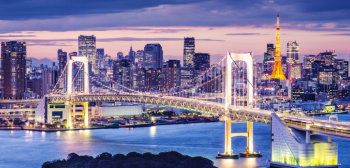
Tokyo
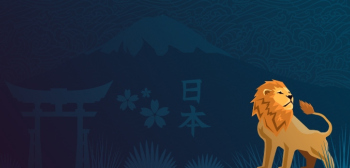
Top Universities in Japan 20…
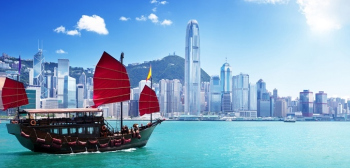
International Scholarships t…

Top 10 Things to Do in Japan

Top Universities for Politic…

Top Universities in Asia for…

Top Universities in Asia for…
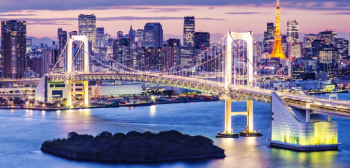
Top Universities in Asia for…
